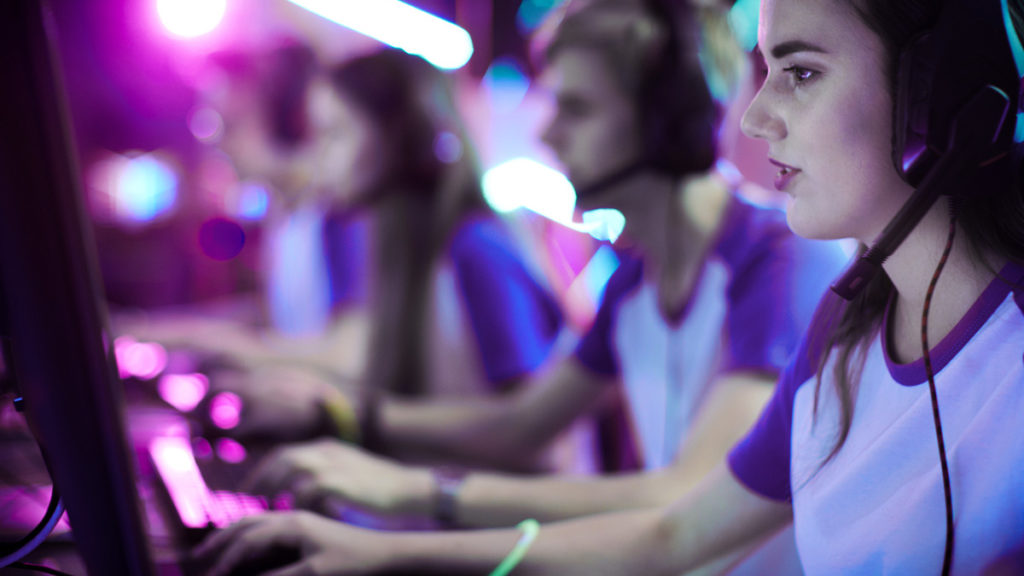Many developers and publishers are still hanging on to outdated views of the gaming demographic by heavily targeting teenage boys as their primary audience, even though studies by analyst firms such as Newzoo found that 45 percent of gamers are women.
Although companies including Microsoft and Facebook are working to address the issue through targeted initiatives, gender diversity in the video game industry as a whole remains an issue, with many publishers overlooking almost half the gaming audience when marketing their titles.
Angela Hession, co-lead for Microsoft’s Women in Gaming initiative told AListDaily that the best way to grow and diversify an audience is to focus on culture, content creation and engagement.
“I believe starting with a set of committed core values to build inclusive games is the first step,” she said. “These shared values around creating inclusive and respectful gaming experiences will inspire collaboration and innovation within teams and across the industry.
Hession also believes that ensuring a wide range of perspectives, including women, are included early in the development cycle will help make games more appealing, reduce missed business opportunities and help with innovation.
Facebook has a similar Women in Gaming initiative that encourages diversity and inclusion in the video game industry. In February, the social platform launched #SheTalksGames, a collection of videos that highlight female professionals across the industry, with roles that range from CEOs to marketing and sales, development, writing and design.
“Nearly half of gamers today identify as female, yet according to recent IGDA survey women make up just 23 percent of [gaming industry] workforce,” said Aoife Brodigan, Facebook head of games marketing in Europe, the Middle East and Africa. “We need to use the full talents of the population to create titles and games that speak to the full population. By bringing more diverse voices to the table we believe this could lead to the creation of more engaging games and richer experiences for players.”
Even as consumers see more female protagonists being featured in games, Brodigan said the overall message from the community is that there is more work to be done, and more diverse voices are needed to help inspire change.
These sentiments can be found throughout Microsoft’s Xbox head Phil Spencer keynote speech at DICE, which highlights the connection between the creative teams and how games are presented. At one point, Spencer discussed how Minecraft’s mascot characters, Steve and Alex, were shown in stereotypical gender roles—with Steve often being portrayed as an architect, designer or geologist while Alex liked to build and explore.
That changed when Minecraft brand director, Lydia Winters, pointed out the “subtle but powerful gender distinction.” The team changed how the game was presented, with one example being that going forward, Alex was never to stand behind Steve on the box art. “These deliberate fixes made Minecraft more gender equal, and it signals to our players and teams to think of them as equals.”
EA Sports began a similar initiative in 2015 when it included both female and male athletes on the cover of FIFA 16, which went on to become one of the best-selling games of that year. But even though EA decided to be more inclusive of female sports fans, its main competitors have yet to follow suit.
“I was excited to see that EA was taking that step because female sports are historically underrepresented,” said What’s Good Games executive producer Andrea Rene, who is featured in one of the #SheTalksGames stories. “I appreciate that EA said that women’s sports deserves a spotlight alongside men’s sports, but do I think it will kickstart a revolution? No, but it’s a step in the right direction.”
“I think that all players, and all people in general, want to feel represented in the entertainment they enjoy and in the world around them,” said Pete Hines, VP for PR and marketing at Bethesda Softworks.
He explained that Bethesda didn’t make hardcore action and role-playing games such as Doom or Skyrim with any one demographic in mind. “Doom isn’t meant to be an inherently male or female game,” said Hines. “It’s just a game where you get to be a badass and kill demons. We don’t talk to people differently about what we make based on what gender they are … Games offer all kinds of experiences for all kinds of people, and you never know who will be into what. That’s how you end up with Skyrim Grandma.”
“The problem with video game marketing today isn’t necessarily that they’re not targeting directly toward women, it’s that they’re actively targeting towards men and leaving women aside,” said Rene. “I think that’s fixable if you make your games and marketing materials more targeted towards everybody instead of just men and teenage boys.”
To overcome stereotypes and better communicate with audiences, publishers need to broaden their view of the gaming community, not just in terms of gender, but also in age and playing preferences.
“As the gaming ecosystem encompasses mobile, PC, console and now streaming, I believe we need to think more broadly about the definition of ‘gamer’ across the board,” said Hession. “Unfortunately, I think the stereotype of a gamer is still tied to a ‘hardcore’ gamer and excludes the vast amount of the larger population of people who engage with games globally.”
Rene agreed that the definition of “gamer” should be thought of more inclusively. “We don’t want to see the video game business make marketing or creative decisions based on stereotypes, because that is leaving a potential audience on the table,” she said. “There has been an unfortunate trend where games that are considered ‘casual’ aren’t for ‘real’ or hardcore gamers. I would like to see those attitudes go away because if you play Candy Crush on your phone, you’re a gamer, just like if you play Madden.”

